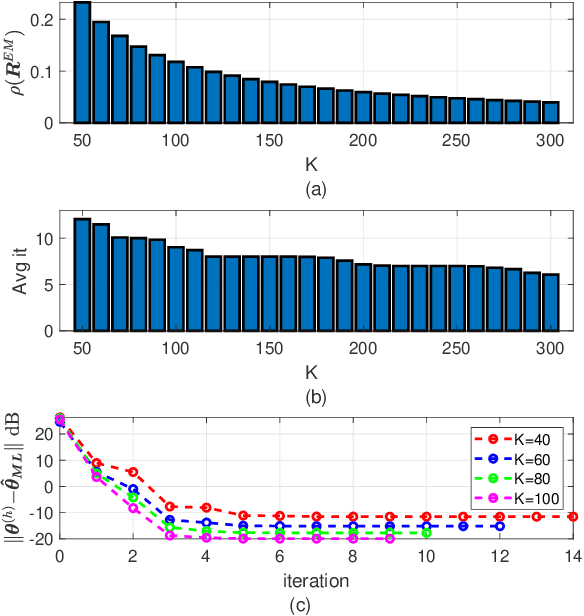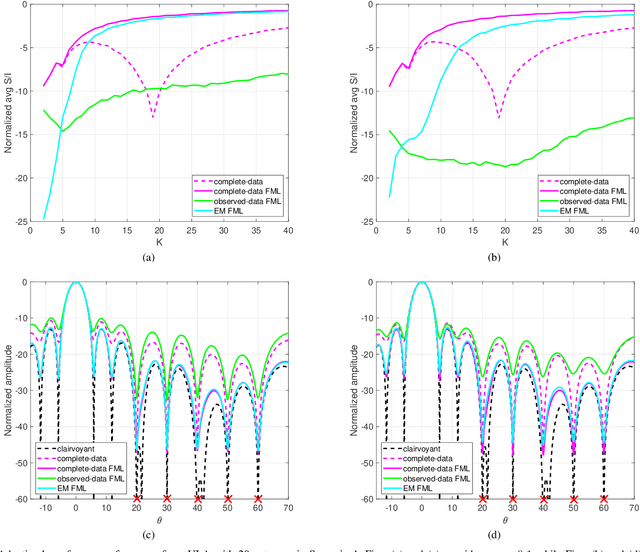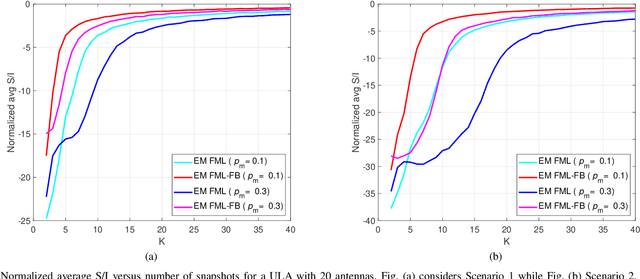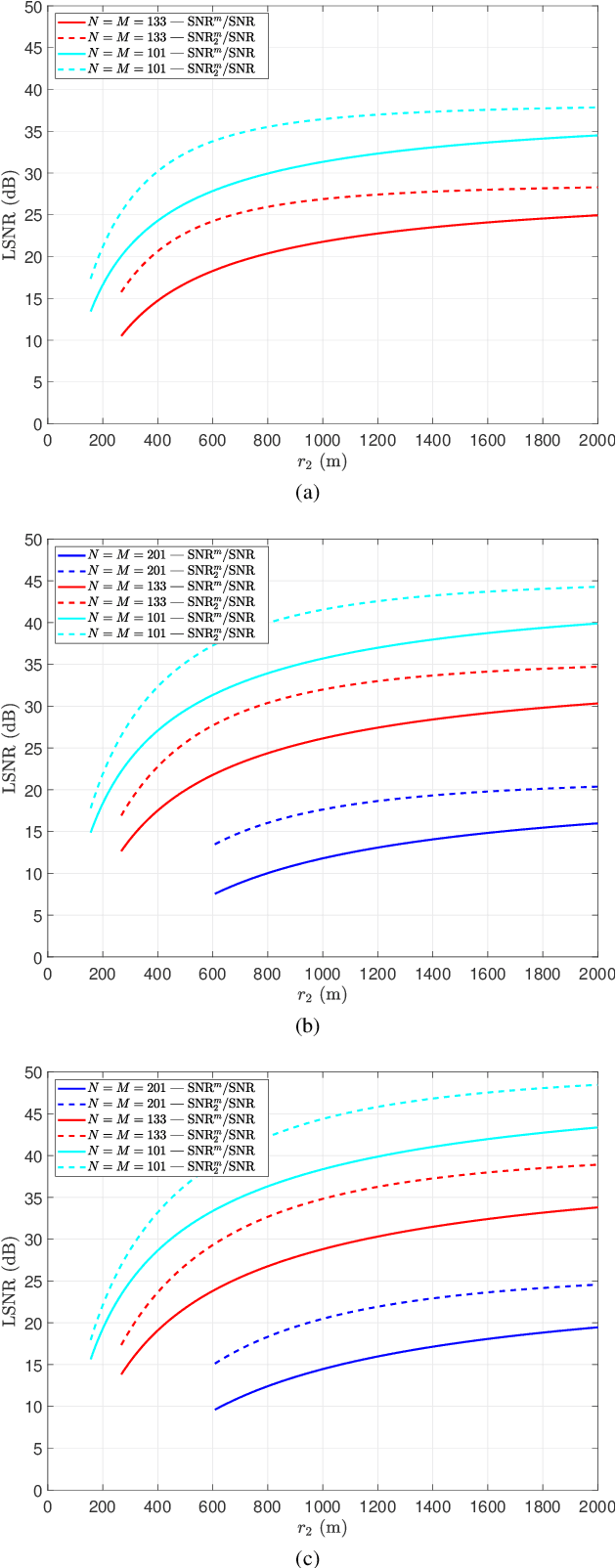Massimo Rosamilia
New Methods for MLE of Toeplitz Structured Covariance Matrices with Applications to RADAR Problems
Jul 08, 2023Abstract:This work considers Maximum Likelihood Estimation (MLE) of a Toeplitz structured covariance matrix. In this regard, an equivalent reformulation of the MLE problem is introduced and two iterative algorithms are proposed for the optimization of the equivalent statistical learning framework. Both the strategies are based on the Majorization Minimization (MM) paradigm and hence enjoy nice properties such as monotonicity and ensured convergence to a stationary point of the equivalent MLE problem. The proposed framework is also extended to deal with MLE of other practically relevant covariance structures, namely, the banded Toeplitz, block Toeplitz, and Toeplitz-block-Toeplitz. Through numerical simulations, it is shown that the new methods provide excellent performance levels in terms of both mean square estimation error (which is very close to the benchmark Cram\'er-Rao Bound (CRB)) and signal-to-interference-plus-noise ratio, especially in comparison with state of the art strategies.
Adaptive Radar Detection and Bearing Estimation in the Presence of Unknown Mutual Coupling
Dec 08, 2022Abstract:This paper deals with joint adaptive radar detection and target bearing estimation in the presence of mutual coupling among the array elements. First of all, a suitable model of the signal received by the multichannel radar is developed via a linearization procedure of the Uniform Linear Array (ULA) manifold around the nominal array looking direction together with the use of symmetric Toeplitz structured matrices to represent the mutual coupling effects. Hence, the Generalized Likelihood Ratio Test (GLRT) detector is evaluated under the assumption of homogeneous radar environment. Its computation leverages a specific Minorization-Maximization (MM) framework, with proven convergence properties, to optimize the concentrated likelihood function under the target presence hypothesis. Besides, when the number of active mutual coupling coefficients is unknown, a Multifamily Likelihood Ratio Test (MFLRT) approach is invoked. During the analysis phase, the performance of the new detectors is compared with benchmarks as well as with counterparts available in the open literature which neglect the mutual coupling phenomenon. The results indicate that it is necessary to consider judiciously the coupling effect since the design phase, to guarantee performance levels close to the benchmark.
Structured Covariance Matrix Estimation with Missing-Data for Radar Applications via Expectation-Maximization
May 08, 2021



Abstract:Structured covariance matrix estimation in the presence of missing data is addressed in this paper with emphasis on radar signal processing applications. After a motivation of the study, the array model is specified and the problem of computing the maximum likelihood estimate of a structured covariance matrix is formulated. A general procedure to optimize the observed-data likelihood function is developed resorting to the expectation-maximization algorithm. The corresponding convergence properties are thoroughly established and the rate of convergence is analyzed. The estimation technique is contextualized for two practically relevant radar problems: beamforming and detection of the number of sources. In the former case an adaptive beamformer leveraging the EM-based estimator is presented; in the latter, detection techniques generalizing the classic Akaike information criterion, minimum description length, and Hannan-Quinn information criterion, are introduced. Numerical results are finally presented to corroborate the theoretical study.
Reconfigurable Intelligent Surfaces for N-LOS Radar Surveillance
May 03, 2021



Abstract:This paper deals with the use of Reconfigurable Intelligent Surfaces (RISs) for radar surveillance in Non-Line Of Sight (N-LOS) scenarios. First of all, the geometry of the scene and the new system concept is described with emphasis on the required operative modes and the role played by the RIS. Then, the specific radar equation (including the RIS effect) is developed to manage the coverage requirements in the challenging region where the LOS is not present. Both noise and clutter interference cases (pulse length-limited and beamwidth-limited surface clutter as well as volume clutter) are considered. Hence, a digression on the use of the radar timeline for the new operative mode is presented together with the data acquisition procedure and the resolution issues for the range, azimuth, and Doppler domains. Finally, the interplay among the system parameters and, in particular, those involving the RIS is discussed and analyzed via numerical simulations.
 Add to Chrome
Add to Chrome Add to Firefox
Add to Firefox Add to Edge
Add to Edge